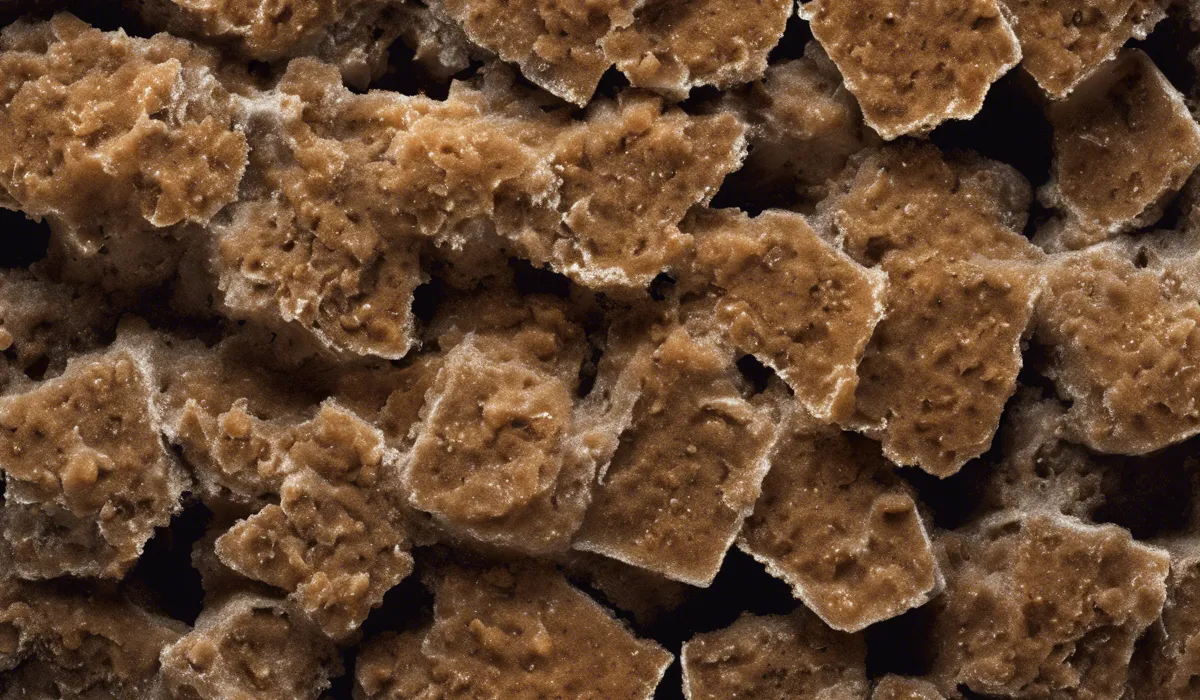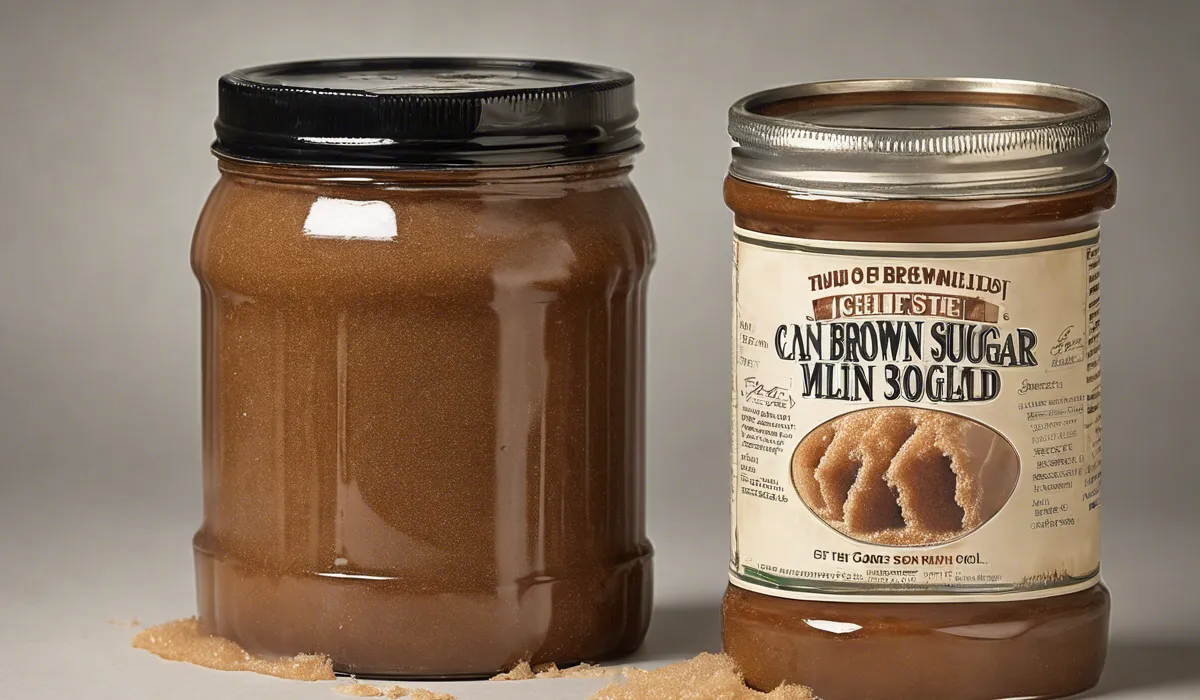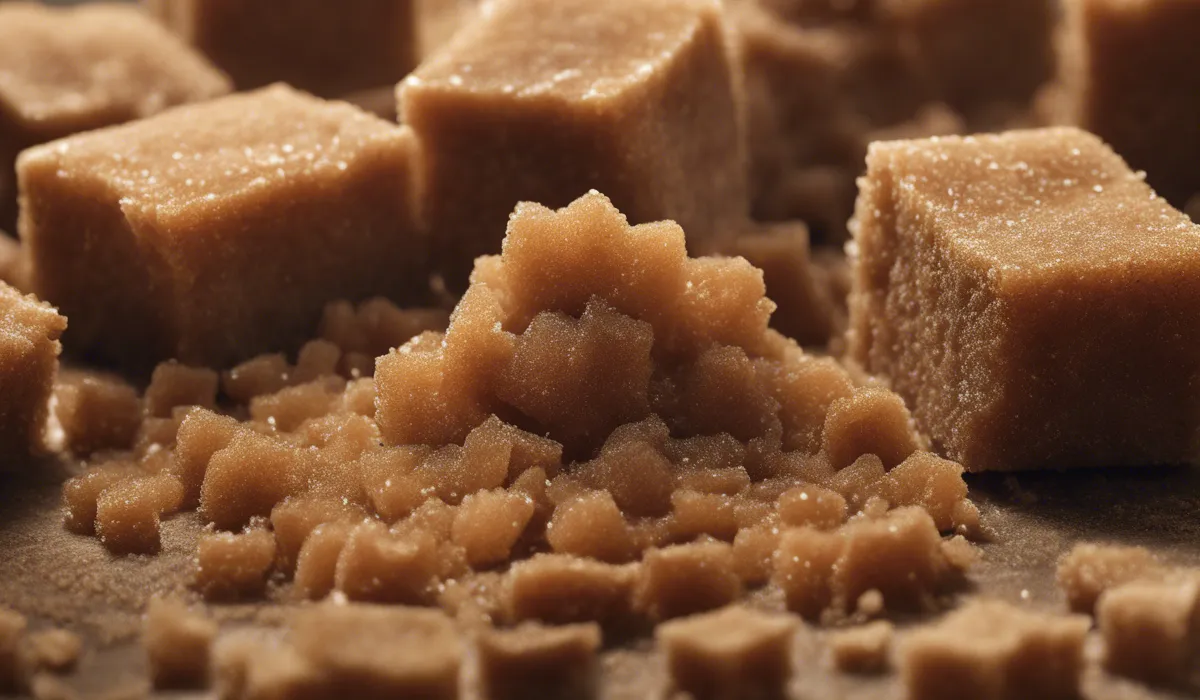Yes, brown sugar can mold. Mold growth in brown sugar is uncommon but possible if exposed to moisture. Store it in a dry, airtight container to prevent molding.
Understanding Mold and Its Growth Conditions

What Is Mold?
Mold is a type of fungus that can grow almost anywhere there is moisture and organic material.
Common types of mold you might find in your home include Aspergillus, Penicillium, and Cladosporium. These tiny organisms reproduce by releasing spores that can be invisible to the naked eye.
Optimal Conditions for Mold to Thrive
Mold loves warm, moist environments with plenty of food. When these conditions are right, mold spores can attach to surfaces and begin to grow. They feed on organic materials, including wood, paper, fabric, and food.
How Sugar Resists Mold?
Sugar itself is a preservative that can inhibit the growth of mold and bacteria. This is because sugar draws water out of microbial cells, dehydrating them and preventing them from thriving.
However, when sugar becomes moist, it can lose this protective property.
Can Brown Sugar Mold?

Brown Sugar’s Unique Composition
Brown sugar is made by adding molasses back into refined white sugar. This gives it a moist, clumpy texture and can have an effect on its susceptibility to mold.
The molasses in brown sugar adds moisture, which under certain conditions, can promote mold growth.
Moisture’s Role in Mold Development
Moisture is the main factor that could lead to mold in brown sugar. If brown sugar absorbs enough moisture from the environment, it can create a habitat where mold spores can grow.
Improper Storage Conditions
Storing brown sugar in a non-airtight container or in a damp environment can allow moisture to seep in.
This can create the perfect breeding ground for mold. It’s important to keep brown sugar in a dry place to prevent this.
Contamination Risks
Using a wet spoon or coming into contact with other moldy food items can introduce mold spores to your brown sugar. Once mold spores are present and the conditions are right, mold can begin to grow.
High Humidity and Water Exposure
Living in a high-humidity area or accidental exposure to water can increase the risk of mold in your brown sugar. Always ensure your sugar is stored away from these elements.
Preventing Mold on Brown Sugar

Storing Brown Sugar Properly
To keep brown sugar from molding, it should be stored in an airtight container. This prevents moisture from getting in and keeps your sugar safe from mold.
Using Desiccants
Desiccants or moisture absorbers can be placed in the storage container with your brown sugar. These help to keep the environment dry and prevent mold from growing.
Ideal Storage Conditions
The best place to store brown sugar is in a cool, dry area where the temperature and humidity are stable. This helps to ensure that the sugar remains dry and free from mold.
Handling Tips to Avoid Contamination
When using brown sugar, make sure your hands and utensils are dry. This prevents introducing moisture or mold spores to the sugar. If you spill water on your sugar, it’s best to throw it away as it can become a breeding ground for mold.
What to Do If Mold Appears?
If you find mold on your brown sugar, it’s best to discard the entire amount. While you might be tempted to just scoop out the moldy part, mold spores can spread throughout the container, contaminating the whole batch.
Safety First
Consuming moldy food can be harmful to your health. If your brown sugar is moldy, it’s safest to err on the side of caution and dispose of it, rather than risk getting sick.
Can You Rescue Moldy Brown Sugar
Some might think that removing the visible mold and using the remaining sugar is acceptable.
However, this is not recommended as mold can spread invisibly, and you could end up ingesting harmful spores.
FAQs About Can Brown Sugar Mold
Is it common for brown sugar to develop mold?
It is uncommon for brown sugar to develop mold, but it can happen if the sugar is exposed to moisture.
What causes brown sugar to mold?
Brown sugar can mold when it is exposed to moisture, as this creates a conducive environment for mold growth.
How can I prevent my brown sugar from molding?
Prevent molding by storing brown sugar in a dry, airtight container away from moisture.
What should I do if I find mold in my brown sugar?
If you find mold in your brown sugar, it is best to discard the entire contaminated portion to ensure food safety.
Can I still use brown sugar if there’s only a small amount of mold?
No, if brown sugar shows any sign of mold, it should not be used as mold can be present throughout the sugar, not just where it is visible.
Final Thoughts
While it’s rare, brown sugar can indeed succumb to mold if it encounters moisture. To keep your brown sugar free from mold, it’s essential to store it properly in a container that is both airtight and dry, safeguarding its quality and extending its shelf life.
